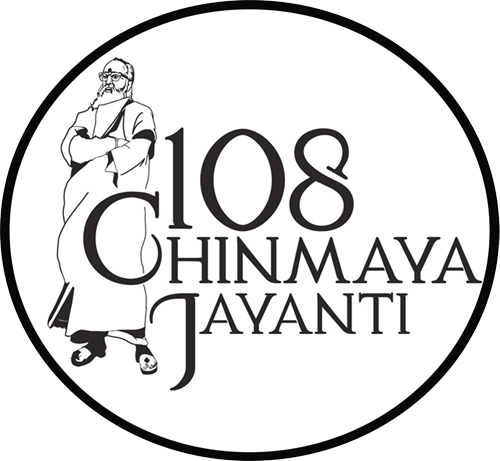Chinmaya Jyoti Reception at Chinmaya Chitrakoot
During his last visit when Pujya Guruji Swami Tejomayananda addressed the congregation, one of the key takeaway messages was “Think Big.” Pujya Guruji reminded us how Chinmaya Mission has grown as a global organization operating in 25 countries and 300 centers. CMDFW has also experienced a similar exponential growth. It was then only natural that we celebrated this expansion in grandeur that was difficult to be contained and curtailed within any confines.
When we received the Chinmaya Jyotis at the Chinmaya Chitrakoot center, the congregation recreated the Kerela atmosphere. In our legacy of the Guruparampara, all the gurus have had their roots in Kerala, also known as God’s own country – and rightfully so. It is the birthplace of great souls such as Sri Adi Shankaracharya, Swami Tapovan Maharaj and Swami Chinmayananda. It was only befitting that the Jyoti Yatra at Chinmaya Chitrakoot incorporated the Kerala theme from the procession to the prasad. The Chinmaya Jyotis arrived carefully after traveling across the nation for almost one and a half years visiting 52 centers in 454 days in 28 States. Pujya Gurudev would have loved the celebrations as he loved dances and festivities.
Witnessing the Jyoti reception one was stunned beyond words. Although it left you speechless, the observers described it as being soaked in our culture. Kids thought it was indeed cool and beautiful. This divine celebration burst with vibrant colors (orange as always was most dominant!). It exuded a happy festive mood for the entire family and we experienced the true spirit of a spiritual Chinmaya family that came together with a unified energy displaying the grandeur joyfully. Loud drums beating in a rhythmic manner allowed us to learn how the festivals are celebrated in Kerela. Devotional sentiments overflowed in everyone’s hearts and the utsaha (enthusiasm), anand (joy) was simply amazing. It truly brought everyone to the core of our being, hence happiness was inevitable. The traditional celebrations and dances were simply beautiful and a lot of fun to witness. The service and commitment of all sevaks and sevikas (volunteers) was commendable. It felt as if this environment was a home away from home and one of the most fulfilling and rewarding. The contented heart was left with a taste of satisfaction and pride in being part of the Chinmaya family. Many people mentioned that they could almost feel His presence and were left speechless while enjoying the rituals and traditions. Chinmaya Chitrakoot was also celebrating their anniversary during this week.
The procession began in grand style with the blowing of the conch and the Chenda melam, a percussion ensemble that is played for all festivals and rituals in Kerala. This was followed by Velakali, a traditional martial dance form of Kerala involving swords and shields, performed during temple festivals.
Poikaal kuthirai aattam was from the neighboring state of Tamil Nadu. A popular folk art form, the dancers use the dummy horse prop with a provision made to fit themselves into its body. The horse is decorated with fabric and glasswork. Interestingly, it is said to have come to the South with the Marathas.
Karagam is a folk dance of Tamil Nadu and Karnataka which originated as a ritual dedicated to Draupadi as known in these parts as droupthamma or the rain goddess mariyamma. The ritual pot filled with water and adorned with decorations several feet high. The dancers perform various acrobatic feats while following the procession accompanied by chenda melam.
Kavadi Attam is a popular religious folk dance native to the state of Tamil Nadu. This Tamil name is a combination of ‘Kavadi’, which metaphorically means “burden”, represented by a wooden apparatus carried by a dancer, and ‘Attam’, meaning dance. This centuries-old art is exclusively dedicated to Lord Murugan, and is commonly performed in groups as part of celebration.
Kolattam is another folk dance from Karnataka, Andra and Tamil Nadu. It is performed with small stick (Kol). The dancers stand in a circle and sing themselves, while beating the small sticks in rhythm. This is a form of ritual worship of the village goddess.
Sambalpuri dance, a colorful folkloric dance form, owes its origin to the western part of Odissa, particularly the erstwhile Sambalpur district of Odissa. This place is known for its sculpturalistic Odissi dance form. Deriving its name from the presiding deity of ‘Samalai’, Sambalpur has a distinct cultural identity of its own. The young girls stand in a line or in a semicircular pattern while dancing.
Vanchi paattu (boat song) is a poetic art form used commonly during Vallam kali (boat races in Kerala). The vanchi paattu ,usually with varied themes, is sung by rowers in the boat races and is characterized by rhythmic lines coupled with beats giving an impetus to the race. The Vanchipattu presented for the Jyoti Yatra, was specially written for the occasion and describes the birth, life and work of Pujya Gurudev.
When the procession arrived at the porch of Chinmaya Chitrakoot, the Jyotis were received with Purna Kumbham and aarati followed by mohiniyattam in praise of Gurudev. Mohiniyattam literally translated as the dance of ‘Mohini’, the celestial enchantress of the Hindu scriptures, is the classical solo dance form of Kerala. Mohiniyattam as seen today has evolved through a long process of evolution. It traces its origin to the temples of Kerala. it portrays feminine love in its myriad forms – carnal, devotional and maternal- with accent more on lasya and bhava. Mudras and facial expressions are more important than the rhythmic steps. Costumes and ornaments of Mohiniyattam have much in common with female characters of Koodiyattam and Kathakali.
In keeping with the Kerala traditions, the Chinmaya Jyotis, Pujya Gurudev’s padukas and picture were welcomed into the Samskrithinilayam with Nirapara (vessel filled with paddy, decorated with coconut flower), Nilavilakku (lamp) and Taala poli – by young girls and ladies dressed in Kerala saree with a thalam or plate in their hands, filled with flowers and lights to usher in happiness and prosperity for the community.
The decoration team did an outstanding job in creating the “Swan Chariot” for Gurudev’s picture and the mandapam with hanging lamps, flowers, and pipal leaves.
The singing group rendered a melodious bhajan, a special composition by Pujya Guruji commemorating the Chinmaya Jyoti. Pujya Swami Sarveshananda ji then performed the guru paduka puja which was followed by sadhya, an authentic Kerela meal.



